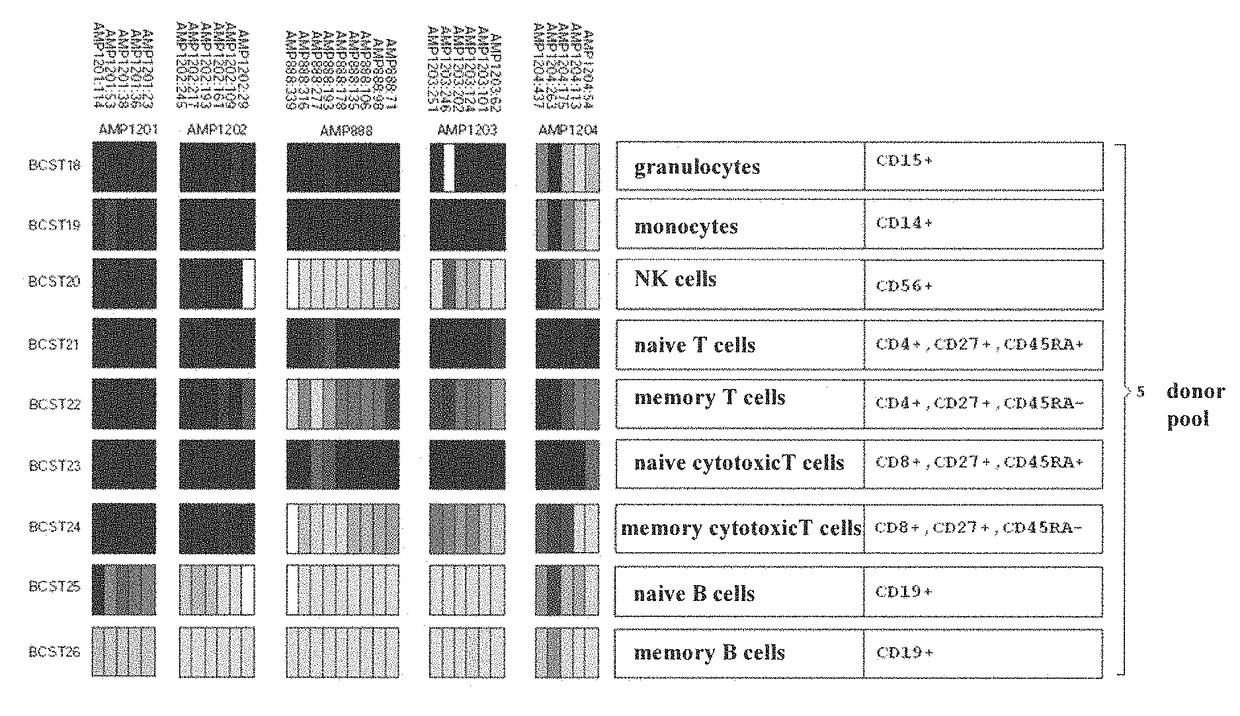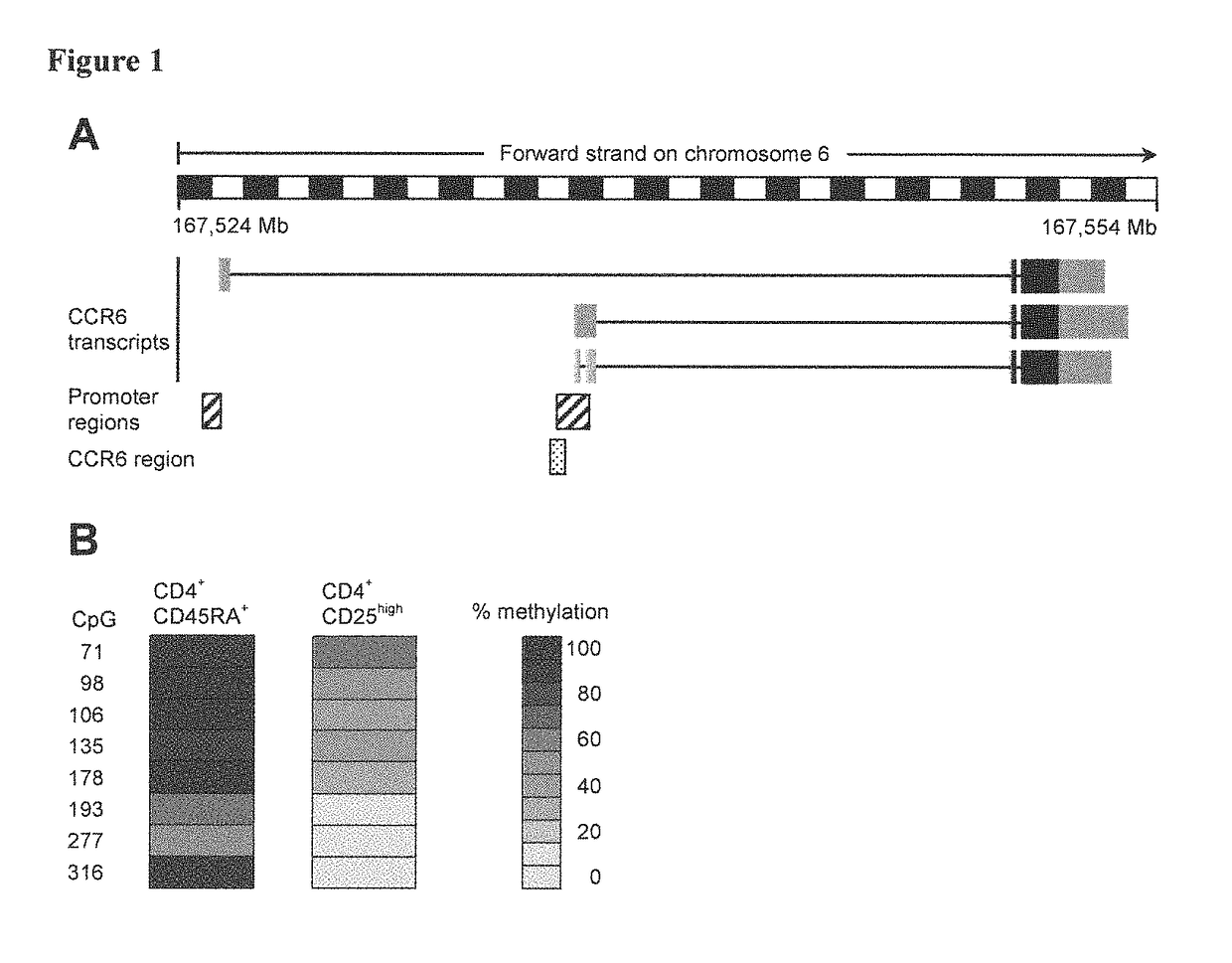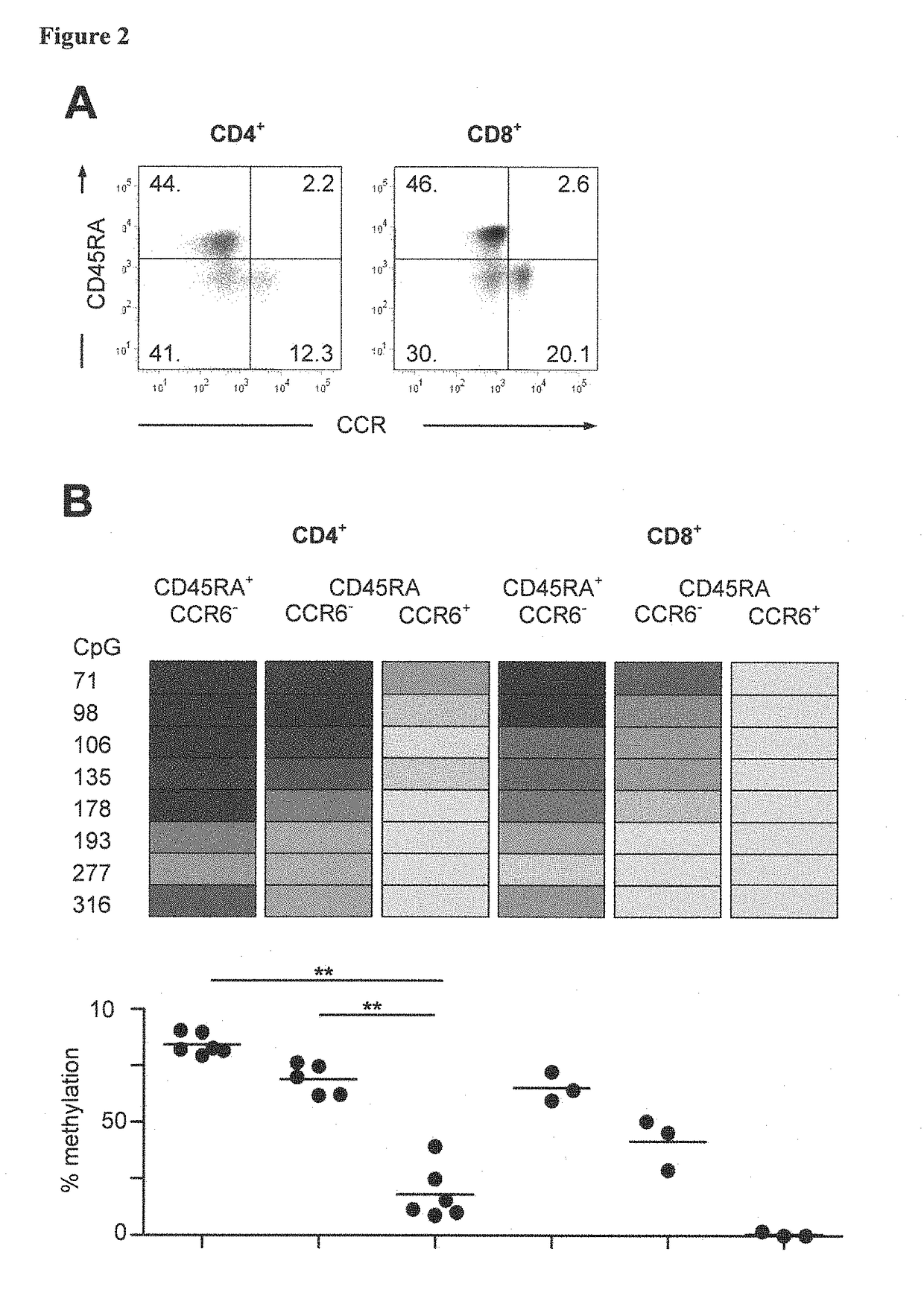Detection of immune cells, in particular T cells through DNA-methylation analysis of the genes CCR6 and BLR1
a technology of t cells and dna-methylation analysis, which is applied in the field of detection of immune cells, can solve the problems of considerable plasticity in the expression of homing receptors, and achieve the effect of improving prediction
- Summary
- Abstract
- Description
- Claims
- Application Information
AI Technical Summary
Benefits of technology
Problems solved by technology
Method used
Image
Examples
example 1
A Non-Coding Region in the CCR6 Locus Displays Differential Methylation Correlating with CCR6 Expression
[0112]The inventors had previously conducted a screen for epigenetically regulated genes in human Tregs by comparing conventional naive CD4+ T cells and CD25highCD4+ Tregs using the differential methylation hybridization (DMH) technique (Baron U, Floess S, Wieczorek G, et al. DNA demethylation in the human FOXP3 locus discriminates regulatory T cells from activated FOXP3+ conventional T cells. Eur J Immunol. 2007; 37:2378-2389). In this DMH screen, CCR6 turned out be among the differentially methylated genes. The preferred differentially methylated region is located upstream of two reported CCR6 transcripts and overlaps with a putative CCR6 promoter (FIG. 1A). To confirm the DMH data the inventors performed bisulfite sequencing using genomic DNA from conventional naive CD45RA+CD4+ T cells and CD25highCD4+ Tregs isolated from human peripheral blood. CD25highCD4+ Tregs showed a larg...
example 2
[0119]Different T cell species were purified and FACS sorted from two independent donors. The separated the cells using CD4 and CD8 as markers for the segregation of cytotoxic and helper T cells. Then, these populations were further separated into naïve and memory cell populations by employing CD45RA. Memory populations were further separated into CCR6 positive and CCR6 negative populations. The results are summarized in the following table 1.
[0120]
TABLE 1Methylation pattern of the genes according to the invention (see FIG. 8)Methylation BLR-1Methylation CCR-6(Amplicon 1037),(Amplicon 888),Cell typeFIG. 8FIG. 8Granulocytes++Monocytes++NK-cells−−Naïve T-cells++Memory T-cells−−Naïve cytotoxic T-cells ++Memory cytotoxic T-cells−−Naïve B-cells−−Memory B-cells−−
[0121]The samples were further subjected to a qPCR analysis directed to CCR6 CpG positions 71, 98, 106 and 135 in amplicon 888 in order to confirm the bisulfite sequencing data shown in FIG. 11. The methylation specific (specific ...
PUM
| Property | Measurement | Unit |
|---|---|---|
| volume | aaaaa | aaaaa |
| nucleic acid based | aaaaa | aaaaa |
| purity | aaaaa | aaaaa |
Abstract
Description
Claims
Application Information
 Login to View More
Login to View More - R&D Engineer
- R&D Manager
- IP Professional
- Industry Leading Data Capabilities
- Powerful AI technology
- Patent DNA Extraction
Browse by: Latest US Patents, China's latest patents, Technical Efficacy Thesaurus, Application Domain, Technology Topic, Popular Technical Reports.
© 2024 PatSnap. All rights reserved.Legal|Privacy policy|Modern Slavery Act Transparency Statement|Sitemap|About US| Contact US: help@patsnap.com










